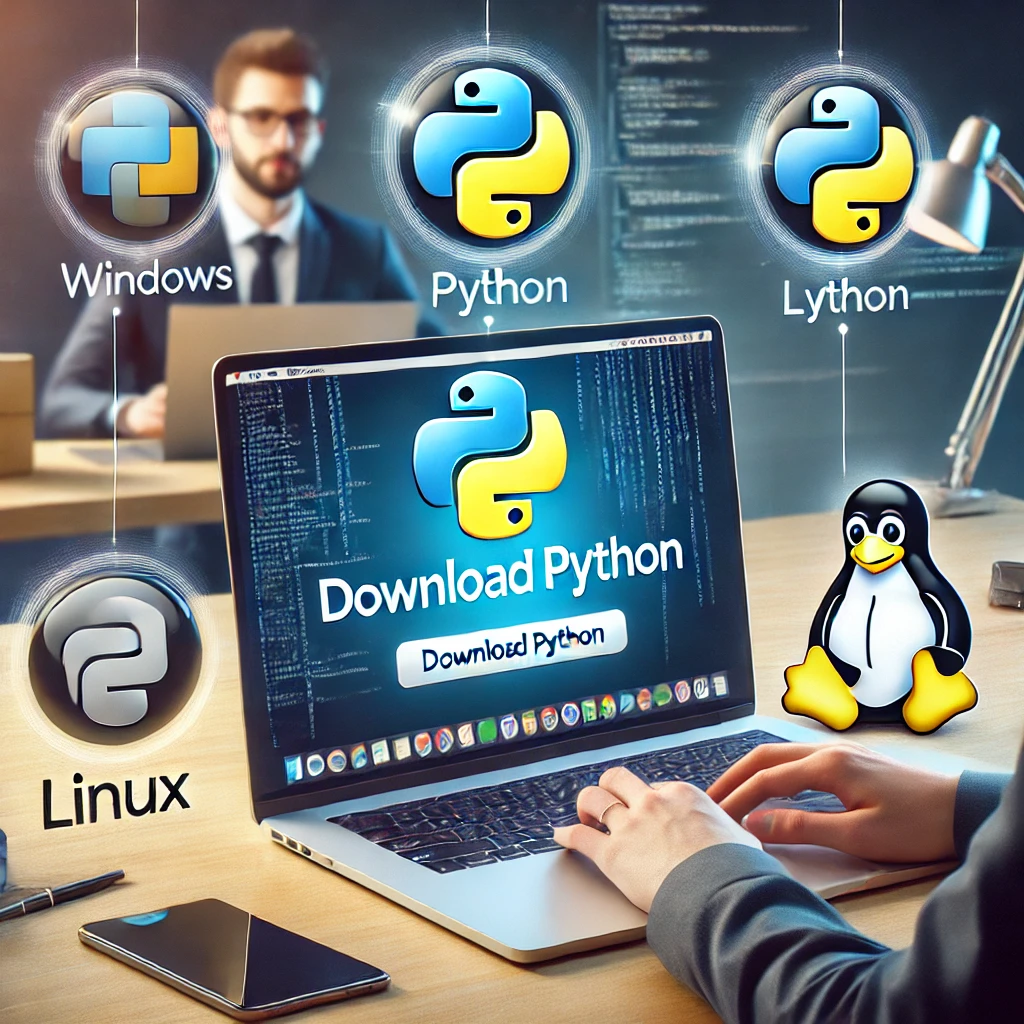1. Introduction
Installing Python on Windows, macOS, and Linux is the first step to starting your programming journey. Python is a powerful and easy-to-learn language used for web development, data science, automation, and artificial intelligence. In this guide, we will walk you through the process of installing Python on different operating systems.
Focus Keyphrase: Installing Python (Windows, macOS, Linux)
2. How to Install Python on Windows
Step 1: Download Python
- Visit the official Python website: https://www.python.org/downloads/
- Click Download Python (latest version).
- Open the downloaded
.exefile.
Step 2: Install Python
- Check the box “Add Python to PATH” (important for running Python from the command line).
- Click Install Now and wait for the installation to finish.
- Open Command Prompt and type:
python --versionExpected Output:Python 3.x.xIf you see this message, Python is installed successfully!
3. How to Install Python on macOS
Step 1: Check if Python is Already Installed
Open the Terminal (Command + Space, type Terminal, and press Enter). Type:
python3 --version
If Python is installed, you will see the version number. If not, follow the next steps.
Step 2: Install Python Using Homebrew
- Install Homebrew (if not installed):
/bin/bash -c "$(curl -fsSL https://raw.githubusercontent.com/Homebrew/install/HEAD/install.sh)" - Install Python using Homebrew:
brew install python - Verify installation:
python3 --version
4. How to Install Python on Linux
Step 1: Check if Python is Installed
Open the terminal and run:
python3 --version
If it’s not installed, follow the next steps.
Step 2: Install Python Using Package Manager
For Debian/Ubuntu
sudo apt update
sudo apt install python3
For Fedora
sudo dnf install python3
For Arch Linux
sudo pacman -S python
Step 3: Verify Installation
Run:
python3 --version
If Python is installed, you will see the version number.
5. Real-Life Applications of Python
a) Web Development
Python frameworks like Django and Flask are used to build websites.
Example: Instagram and YouTube use Python for their backend.
b) Data Science & AI
Libraries like Pandas, NumPy, and TensorFlow help analyze data and build AI models.
Example: Google uses Python for machine learning projects.
c) Automation & Scripting
Python can automate repetitive tasks like sending emails or renaming files.
Example: IT professionals use Python to manage servers.
d) Cybersecurity
Python helps in penetration testing and security research.
Example: Ethical hackers use Python for vulnerability testing.
6. Common Mistakes and How to Fix Them
Mistake 1: Not Checking “Add Python to PATH” (Windows)
If you forget to check the “Add Python to PATH” box, Python won’t work from the command line.
❌ Incorrect:
python --version
Command not found
✅ Fix:
- Reinstall Python and check “Add Python to PATH” OR
- Manually add Python to the system PATH:
- Search “Edit the system environment variables”
- Click “Environment Variables”
- Find “Path” under System Variables, click Edit, and add Python’s installation directory.
Mistake 2: Using python Instead of python3 on macOS/Linux
Many Linux/macOS systems have Python 2 pre-installed. Running python might open the wrong version.
❌ Incorrect:
python --version
✅ Fix:
python3 --version
Mistake 3: Forgetting to Update the Package List (Linux)
If you try installing Python without updating the package list, you may get errors.
❌ Incorrect:
sudo apt install python3
✅ Fix:
sudo apt update
sudo apt install python3
7. Conclusion
Installing Python (Windows, macOS, Linux) is simple, and it opens up many possibilities in web development, AI, automation, and cybersecurity. Follow the correct installation steps, avoid common mistakes, and start coding in Python today!
Next Steps:
- Install Python on your system.
- Practice writing basic Python programs.
- Explore Python libraries like Django, Pandas, and Flask.
